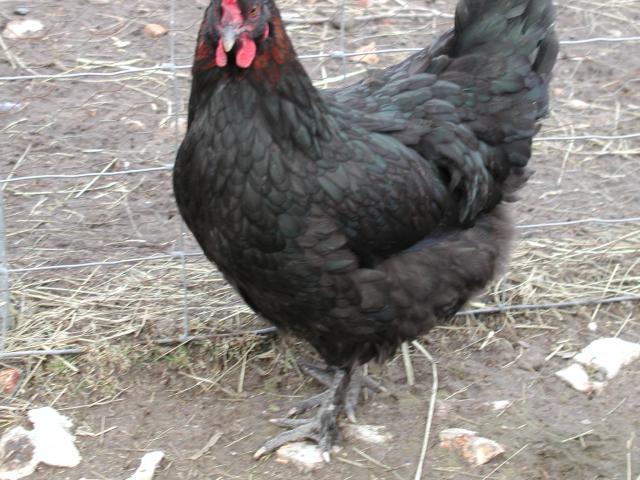Hi there Countrylife.
I have a large colony (three breeding pens) of French White Marans. Please forgive me if some of this is redundant, but let me share some basic information with you and the others following this thread about chicks like yours.
It isn't uncommon, but by no means does it happen every hatch, that a white "sport" or "mutant" hatches from Black Copper Marans. It happens in many breeds (Wyandottes, Australorps, etc) and in different colors (ie, can be a black sport, chocolate sport, lavender sport or if the mutation is on the patterning gene, well, that explains how the Blue Laced Red varieties came to be). Knowlege of applying these mutants, or rather knowing how the genes present, gives breeders insight into how to use these birds in their breeding programs to cultivate new varieties.
Chicks like yours can present as single mutants or double. The most visable difference is going to be readily seen in the pigment of the leg/shank skin. Chicks with a single copy of this recessive gene will have slate or grey colored skin on their shanks. Those with a double copy of this gene will have pink skin on their shanks which as they age becomes more white. Sometimes these mutated birds will have black feathers here and there, but typically these are odd "single" feathers, and the bird doesnt present as much color or as a pokadotted bird such as a splash will. Often as newly hatched chicks, those that are single mutants will appear smudged, have a muddy/grey/silvery cast to their down. Ocassionally a double mutant will hatch with the light pink legs and have some smudginess around its head.
These "sports" or mutants can appear in any of the Marans varieties, including wheatens and cuckoos. Typically white Marans will lay lighter eggs than their cousins the Black Copper.
Double mutants typically will breed true, in that they will throw white offspring, and the majority of these offspring will have the pink shank skin. Single mutants can throw anything from red and white (the white will dominate or mask the black pigment, but the red will bleed through onto the hackles, saddle and sickles) to "normal" pigmented birds, just depending on the genetic makeup is of the bird they are bred to. There is also a connection to the barring gene which is present in the cuckoos. A very good genetics description takes place on the Marans Club of Australia, and how the white gene can be manipulated and applied.
I just hatched a group of white Marans. The sire of these chicks is a double mutant black copper. If I didn't know his genetic makeup, I would have mistaken him for one of my whites, albeit he has a higher tail angle (a fault of the bird and not color dependent). I bred him to four of my nicest white hens. My objective here is to darken egg color. What I didnt know is how his genes might affect or present when combined to solid Whites. There were a total of 20 chicks that hatched yesterday, all have feathered shanks. One is a straight up single mutant, with smudgey down and dark shank and toe skin. One has a little smudging with greyish shanks with pink feet. 18 are pure yellow down with pink legs and feet. While one hatch is not enough data to statistically determine if this will be successful-- and it will be another 9 or 10 months before I will know if the females will lay darker eggs-- I am thrilled with this outcome-- to have 18 "initial" keepers out of 20.
From the picture, it appears that your chick has dark eggs. This tells me that only one of the parents is carrying the recessive white gene, and should you breed it, you will likely see variations of a "normal" bird, unless you happen to double it up with another bird carring a recessive white gene (breeding to full sibling or better yet back to its parent would be you best candidate to obtain this).
Hope this explains the color genetics a bit for you, and if you end up having a pullet there, may she lay a dark egg like her black copper relations do.



